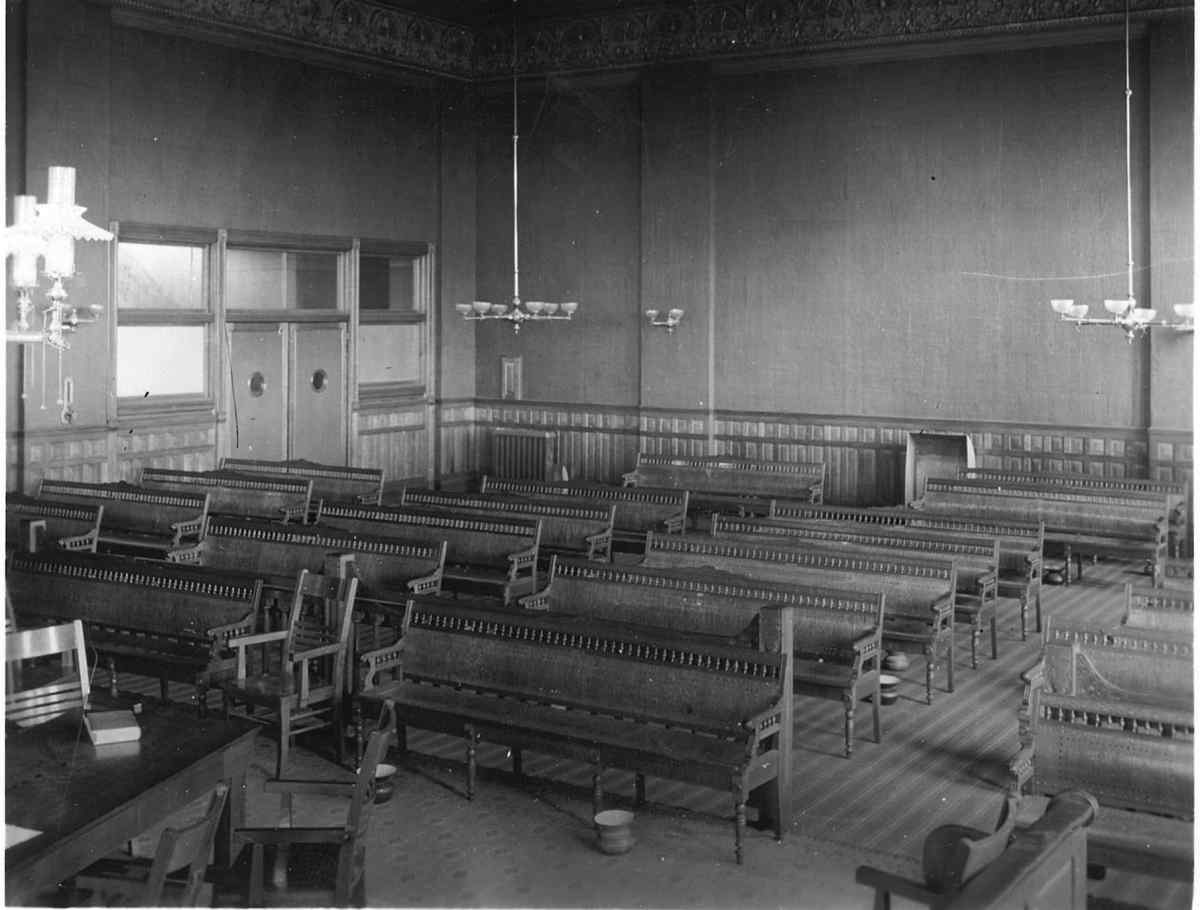1892 Courthouse lights return
1892 Marathon County Courthouse Lights Return to Wausau
 As many longtime residents will remember, the Marathon County Courthouse was at the center of downtown Wausau, located on the current site of The 400 Block outdoor space. The impressive Richardson Romanesque-style structure was built in 1892, a time when electricity was still new to Wausau. Like many other public buildings of the time, lighting at the courthouse was provided by gas-fueled fixtures.
As many longtime residents will remember, the Marathon County Courthouse was at the center of downtown Wausau, located on the current site of The 400 Block outdoor space. The impressive Richardson Romanesque-style structure was built in 1892, a time when electricity was still new to Wausau. Like many other public buildings of the time, lighting at the courthouse was provided by gas-fueled fixtures.
In the early 1950s Jerome Balthazor, a local painter and decorator, was hired as part of a project to update the interior of the courthouse. Several years later, when the building was about to be razed, Jerome was allowed to go back inside. When he realized the original gas-fueled lights would be destroyed, he took them home. According to his daughter Barbara, “He was definitely one who thought Wausau made a big mistake taking down an iconic building.”
The lights remained with the Balthazor family for almost 65 years until Barbara donated them to the Marathon County Historical Society in 2018. The donation includes four lights. Each is about 12” high and includes a bass fixture with a glass chimney. A pair of delicate chains were used to adjust the airflow, which changed the brightness of the flame.
As part of the new donation accessioning process, artifact curators asked archivist Ben Clark if he could search the historical society photograph collection for interior views of the 1892 courthouse. Only three courthouse interior photos were found but, surprisingly, a photo of the courtroom clearly showed the light fixtures. As can be seen at the far left in the photo, gas piping extended from the wall and was attached to the lights. The lights originally had white glass “shades” to direct illumination downward but they are no longer present.
Thank you to Barbara Balistreri from Brown Deer, Wisconsin, for returning this important part of county history to the Marathon County Historical Society so it can be preserved for generations to come.
By Kathy Volkmann, Curator of Artifacts
